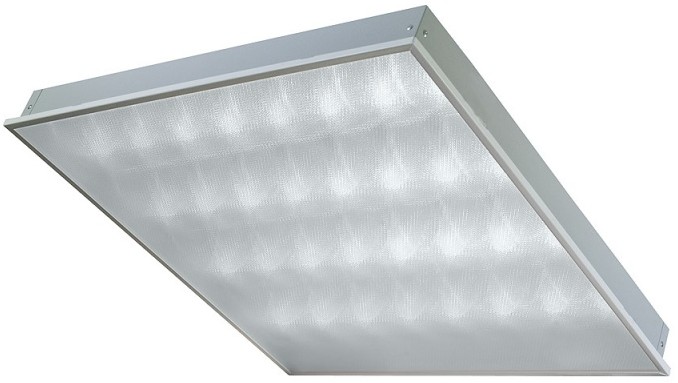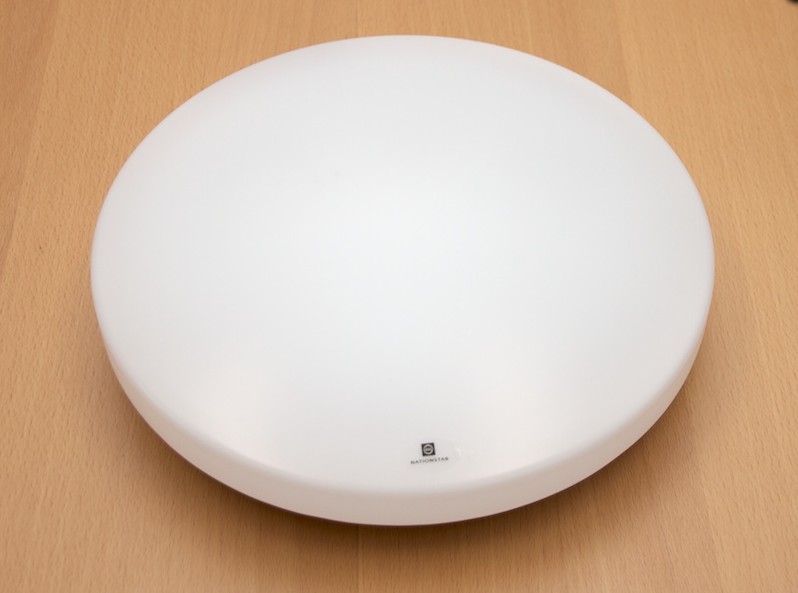Future home lighting
Traditional incandescent bulbs with tungsten filament have served humanity for more than 120 years. Compact fluorescent (energy-saving) lamps were patented in 1984, and came into use only ten years ago.
Apparently, both those and others will soon go to rest - with a fairly high probability we can say that in the near future LEDs will be mainly used for domestic lighting.

')
Fifty years have passed since the creation of the first LED. At first, the LEDs were called “Losev Light” (Losev Light) by the name of the Soviet physicist Oleg Losev, who in 1923 discovered the electroluminescence of a semiconductor junction. The first appeared red LED, then in the early 70s yellow and green LEDs appeared. The blue LED was created in 1971 by Yakov Panchechnikov at RCA, but it was extremely expensive. In 1990, the Japanese Suji Nakamura created a cheap and bright blue LED.
Twenty years ago it was believed that it was impossible to create a white LED, however, after the appearance of a blue LED, it became possible to make white light sources with three crystals (RGB), and in 1996 the first white phosphor LEDs appeared. In them, the light of an ultraviolet or blue LED is converted to white using phosphor. By 2005, the light efficiency of LEDs reached 100 lm / W and more. This allowed us to start using LEDs for lighting, because LED is one of the most economical light sources - it is 6-10 times more efficient than an incandescent lamp.
Today, LEDs have reached such quality and brightness that they can fully replace incandescent bulbs, and if good LEDs are used, it is impossible to notice the difference in lighting.
Now, in most stores selling light bulbs, there are already retrofit LED bulbs on the shelves for standard E27, E14 and others. After five years there will be a majority of such bulbs on the shelves of the stores, but this branch is a dead end. Of course, such bulbs will be made for a long time, but the future is not theirs.
The future for LED lights in which there will be no patrons and caps. Good LEDs live long enough, so there is no need to replace them.
The industry is very inertial, but now you can buy office LED lamps - analogs of standard lamps on fluorescent tubes, tubes. And the cost of these lamps is not much more than the cost of lamps on fluorescent lamps. For example, a good square LED lamp for a suspended ceiling with a power of 32W, replacing the lamp with four 18W lamps, costs only 2000 rubles. Cheap can be found for 1200. While the usual lamp complete with lamps costs about 1000 rubles.

At the same prices appeared LED lamps, replacing the lamps on fluorescent tubes, tubes 2x36w.
Lamps are starting to appear that can be used in common areas. For example, this 22W LED lamp has a brightness of 1800 lm and can replace a lamp with two 75W incandescent lamps. At the same time it costs a little more than 1000 rubles.

But there are practically no LED chandeliers for living rooms, but they will definitely appear. Perhaps the design of the chandeliers in connection with this will radically change, however there is no problem to make a chandelier on LEDs with a completely traditional design.
I suppose that pretty soon sales of any light bulbs will become minimal - everyone will buy ready-made LED lights and light bulbs will not be needed.
This could have been the end of it, but I will probably explain some points briefly and perhaps answer questions that you might have.
Incandescent lamp is extremely inefficient - only 5% of the energy applied to it turns into light. 95% - in heat. In addition, it is short-lived - the average time of work is 1000 hours.
A compact fluorescent (energy-saving) lamp is five times more efficient than an incandescent lamp, but it has many drawbacks: the lamp contains mercury and presents a real health hazard if it breaks; the lamp slowly inflames, and in the cold it makes it even slower; often the lamp has an unnatural, unpleasant for the eyes color of lighting, the lamp does not allow to adjust its brightness (dimmed CFLs are very rare, but the minimum level of brightness is quite high); the lamp is short-lived (usually 8000 hours) and degrades in the process.
There are already LED lamps for standard sockets (retrofits) that can fully replace incandescent lamps without degrading the quality of lighting. These lamps do not flicker, have a comfortable color and sufficient brightness. With the same brightness, their power is usually eight times lower than the power of incandescent lamps.
I consider it important to note that even though all these lamps are made in China, for some reason they are not sold in Chinese online stores. And the fact that there is sold, overwhelmingly, has a very low quality and low power. None of the two dozen LED lamps that I bought in Chinese online stores did not have sufficient quality for residential use. These lamps flickered, had insufficient brightness, uncomfortable color. I strongly recommend not buying lamps there.
Manufacturers of retrofit LED lamps for standard sockets are forced to make many compromises - you need to somehow push the driver (power supply for LEDs) into a standard socle, and provide the necessary cooling for the LEDs. Of course, if you are not constrained in size (in the case of a lamp), all this can be done easier, better and cheaper.
Apparently, both those and others will soon go to rest - with a fairly high probability we can say that in the near future LEDs will be mainly used for domestic lighting.

')
Fifty years have passed since the creation of the first LED. At first, the LEDs were called “Losev Light” (Losev Light) by the name of the Soviet physicist Oleg Losev, who in 1923 discovered the electroluminescence of a semiconductor junction. The first appeared red LED, then in the early 70s yellow and green LEDs appeared. The blue LED was created in 1971 by Yakov Panchechnikov at RCA, but it was extremely expensive. In 1990, the Japanese Suji Nakamura created a cheap and bright blue LED.
Twenty years ago it was believed that it was impossible to create a white LED, however, after the appearance of a blue LED, it became possible to make white light sources with three crystals (RGB), and in 1996 the first white phosphor LEDs appeared. In them, the light of an ultraviolet or blue LED is converted to white using phosphor. By 2005, the light efficiency of LEDs reached 100 lm / W and more. This allowed us to start using LEDs for lighting, because LED is one of the most economical light sources - it is 6-10 times more efficient than an incandescent lamp.
Today, LEDs have reached such quality and brightness that they can fully replace incandescent bulbs, and if good LEDs are used, it is impossible to notice the difference in lighting.
Now, in most stores selling light bulbs, there are already retrofit LED bulbs on the shelves for standard E27, E14 and others. After five years there will be a majority of such bulbs on the shelves of the stores, but this branch is a dead end. Of course, such bulbs will be made for a long time, but the future is not theirs.
The future for LED lights in which there will be no patrons and caps. Good LEDs live long enough, so there is no need to replace them.
The industry is very inertial, but now you can buy office LED lamps - analogs of standard lamps on fluorescent tubes, tubes. And the cost of these lamps is not much more than the cost of lamps on fluorescent lamps. For example, a good square LED lamp for a suspended ceiling with a power of 32W, replacing the lamp with four 18W lamps, costs only 2000 rubles. Cheap can be found for 1200. While the usual lamp complete with lamps costs about 1000 rubles.

At the same prices appeared LED lamps, replacing the lamps on fluorescent tubes, tubes 2x36w.
Lamps are starting to appear that can be used in common areas. For example, this 22W LED lamp has a brightness of 1800 lm and can replace a lamp with two 75W incandescent lamps. At the same time it costs a little more than 1000 rubles.

But there are practically no LED chandeliers for living rooms, but they will definitely appear. Perhaps the design of the chandeliers in connection with this will radically change, however there is no problem to make a chandelier on LEDs with a completely traditional design.
I suppose that pretty soon sales of any light bulbs will become minimal - everyone will buy ready-made LED lights and light bulbs will not be needed.
This could have been the end of it, but I will probably explain some points briefly and perhaps answer questions that you might have.
Incandescent lamp is extremely inefficient - only 5% of the energy applied to it turns into light. 95% - in heat. In addition, it is short-lived - the average time of work is 1000 hours.
A compact fluorescent (energy-saving) lamp is five times more efficient than an incandescent lamp, but it has many drawbacks: the lamp contains mercury and presents a real health hazard if it breaks; the lamp slowly inflames, and in the cold it makes it even slower; often the lamp has an unnatural, unpleasant for the eyes color of lighting, the lamp does not allow to adjust its brightness (dimmed CFLs are very rare, but the minimum level of brightness is quite high); the lamp is short-lived (usually 8000 hours) and degrades in the process.
There are already LED lamps for standard sockets (retrofits) that can fully replace incandescent lamps without degrading the quality of lighting. These lamps do not flicker, have a comfortable color and sufficient brightness. With the same brightness, their power is usually eight times lower than the power of incandescent lamps.
I consider it important to note that even though all these lamps are made in China, for some reason they are not sold in Chinese online stores. And the fact that there is sold, overwhelmingly, has a very low quality and low power. None of the two dozen LED lamps that I bought in Chinese online stores did not have sufficient quality for residential use. These lamps flickered, had insufficient brightness, uncomfortable color. I strongly recommend not buying lamps there.
Manufacturers of retrofit LED lamps for standard sockets are forced to make many compromises - you need to somehow push the driver (power supply for LEDs) into a standard socle, and provide the necessary cooling for the LEDs. Of course, if you are not constrained in size (in the case of a lamp), all this can be done easier, better and cheaper.
Source: https://habr.com/ru/post/210002/
All Articles